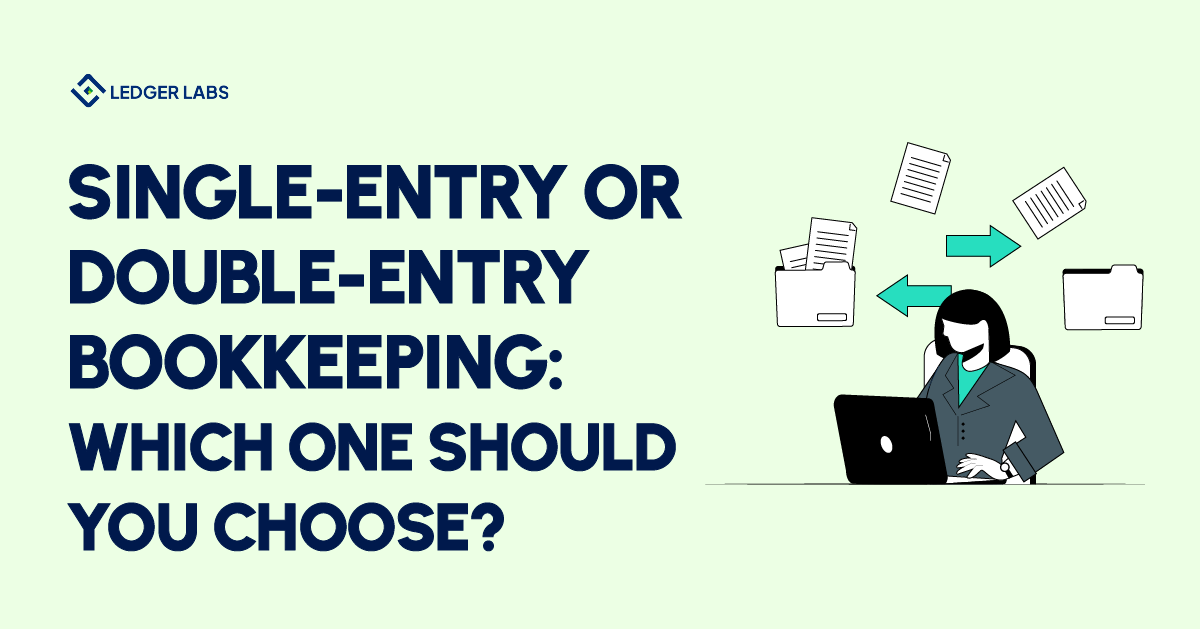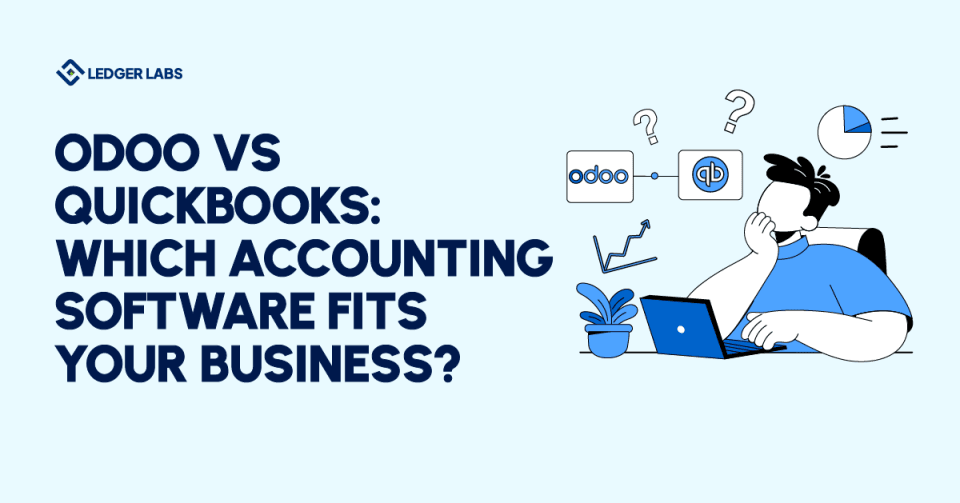1. Single-entry bookkeeping records transactions once, suited for small businesses, but lacks accuracy and financial insights compared to double-entry.
2. Double-entry bookkeeping records transactions twice, balancing debits and credits, ensuring precision and comprehensive financial reporting.
3. Single-entry systems are simple, cost-effective, and ideal for tracking income and expenses but are prone to errors and fraud.
4. Double-entry systems are complex yet crucial for larger businesses, offering accuracy, compliance, and a full financial picture.
Bookkeeping is one of the more crucial and initial tasks related to a business.
It’s been known for years that if the bookkeeping practices are adopted by any organization and followed perfectly, then the same can easily ensure steady and stable growth in a shorter period.
This is one of the main reasons that not only professional entrepreneurs but also investors rely on a business that undergoes reliable bookkeeping services for the recording and management of financial data in the books of accounts.
What is Single-Entry Bookkeeping?
The single-entry bookkeeping is the basic form of bookkeeping. Just like the name of the method, under single-entry bookkeeping, the transactions occurring during the operations of any business are recorded once. This means that only the amount of the transaction is recorded in a single log or account irrespective of the type of account or even the debit/credit annotation.
This method of bookkeeping is quite straightforward and easy to follow. Although the technique is very simple, a lot of businesses try to stay away from this technique. They generally use double-entry bookkeeping because it’s more inclusive and expressive. If any business involves itself in single-entry bookkeeping services, then even the business, let alone the outsiders, will face a hard time asserting the position of the organization.
Under the single form, there is no way to ascertain the assets, liabilities, profits, losses, expenditures, etc. related to the business. Hence, it becomes less presentable to others and confusing as well.
The basic reason why single-entry bookkeeping is adopted by any business is for the mere satisfaction of the tax authorities and their requirements. Only time/date, transaction type, and amount are recorded under this form of bookkeeping.
Let’s understand the type of bookkeeping technique closely with the help of an example.
Single-Entry Bookkeeping Example
The table below shows the expenditure and receipts of a business that has been recorded using the single-entry system of bookkeeping:
The amounts presented inside Parentheses or brackets () constitutes the debited amounts. Even if you decide to create two columns for the expenditure and receipts, the method will still be single-entry because the data is still entered only once as the debit or credit.
Pros and Cons of Single-Entry Bookkeeping
For a better insight into what single-entry bookkeeping is and its usage in any organization, let’s have a look at its pros and cons.
Pros of Single-Entry Bookkeeping
- Very easy to follow
- Suitable for small-scale businesses
- Does not require an accounting or bookkeeping professional
- No need for accounting or bookkeeping software
- Creates a consolidated profit and loss statement
- No problems from the tax authorities
- Very easy to retain data
Cons of Single-Entry Bookkeeping
- Unreliable
- Can not be used for balance sheet generation
- Only covers incoming and outgoings, not credit and debit
- Increased chances of fraud
- Can not show the exact financial position of the organization
- Unable to find discrepancies
- Unsuitable for large or medium-scale businesses
Train with the best
For Accounting Insights, Financial
Subscribe to our newsletter to hear the latest news
Management Solutions, And More
What is Double-Entry Bookkeeping?
The next section in this guide on what is the difference between single-entry & double-entry bookkeeping is the definition of the latter one. Double-entry bookkeeping is a technique of bookkeeping under which a transaction is created to make both credit and debit effects to the organization and is recorded as such in the books of accounts. To state simply, under the double-entry bookkeeping technique, a transaction is shown as debit at one book of account and credit at another.
This means that the double-entry bookkeeping technique believes that every transaction is actually both a debit and a credit one for the organization. The amount debited and credited in the respective accounts should be the same under all circumstances. Any discrepancy suggests that either fraud has been committed or the transaction is simply omitted by the bookkeeper or accountant.
The debit amount is recorded on the left column of the ledger and the credit amount is recorded on the right column. When the amounts from the ledger of the debit and credit sides are summoned up, they should automatically be equal. Thus, it means that even the assets will be equal to the sum of liabilities and equities. If the amount is equal, then it represents that there are fewer chances of errors and fraud in such a statement.
Most businesses rely on the double-entry bookkeeping technique for the recording of financial data and transactions. This is because, even though the technique is a little complicated to follow and needs expert supervision, it is heaps and bounds better and more accurate than single-entry. Even if a novice outsider looks at the ledger for reference, the double-entry bookkeeping allows him to get accurate and precise detail from the books of accounts.
Let’s understand the type of bookkeeping technique closely with help of example.
Double-Entry Bookkeeping Example
The below table shows the expenditure and receipts of a business that records using the double-entry system of bookkeeping:
Date | Debit | Credit |
Expenses | $ 6,000 | |
AR | $ 6,000 | |
AP | $ 15,000 | |
Cash | $ 4,000 | |
Inventory | $ 1,000 | |
Total | $ 16,000 | $ 16,000 |
The above table shows how the data is distribute into two categories viz the debits and credits and the sum of both is equal.
Pros and Cons of Double-Entry Bookkeeping
For a better insight into what double-entry bookkeeping is and its usage in any organization, let’s have a look at its pros and cons.
Pros of Double-Entry Bookkeeping
- Provides accurate and reliable data
- A business can easily figure out the fraud or error after amount mismatch
- Easily create financial accounts, balance sheets, profits and loss accounts, etc.
- Offers a better insight into the business, its operations, and soundness
- Easier to maintain separate accounts
- Suitable for small, large, or medium-scale businesses
Cons of Double-Entry Bookkeeping
- Not easy to follow
- Requires expert overview
- High cost of maintenance
Single Entry vs Double Entry Bookkeeping: How to Choose the Perfect One
The definition and usage of both techniques of bookkeeping must be clear by now. Businesses with small-scale operations may take the help of the single-entry system of bookkeeping. This is only suggest when the budget of the business prohibits it from using professional accounting software or hiring the required personnel to undergo double-entry bookkeeping. Similarly, the small business offering some kind of service may also rely on a single-entry system as there is less number of products to deal with.
When your business uses the latter technique, you get peace of mind that the data recorded and presented in the accounts are reliable. Additionally, it becomes quite easy for the business to figure out where its efforts are lacking and work for rectification.
Moreover, the double-entry system also makes it very easy for businesses to gain new and retain existing investors. This is because the investors will just have a look at the books of accounts and gather the required information about any business. They will not be skeptical while making investment decisions.
Summing Up
So, at last, all we would like to say is that if you want your business to grow steadily and swiftly, then you should skip wondering between single-entry & double-entry bookkeeping techniques and indulge in the latter one. If you want further help in understanding the difference between the two or want assistance with the double-entry system, the experts at The Ledger Labs are here to help you. Allow us to get things done for you and execute the accurate double-entry bookkeeping.
Our experts at Ledger Labs are highly trained, experienced, and motivated to help businesses from all industries, even including domains like e-commerce accounting. Connect with us today.













